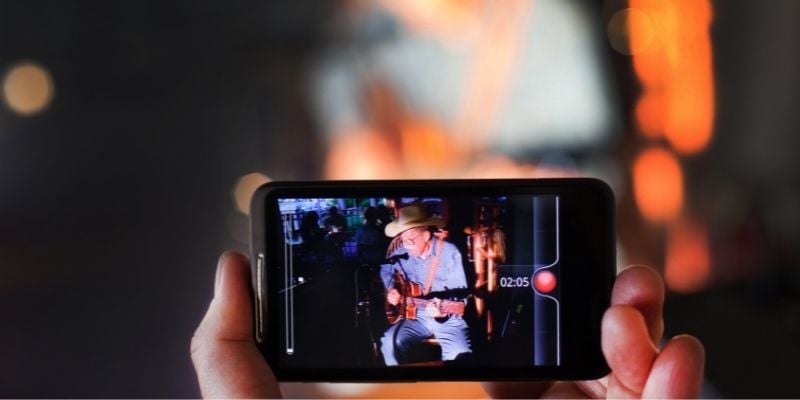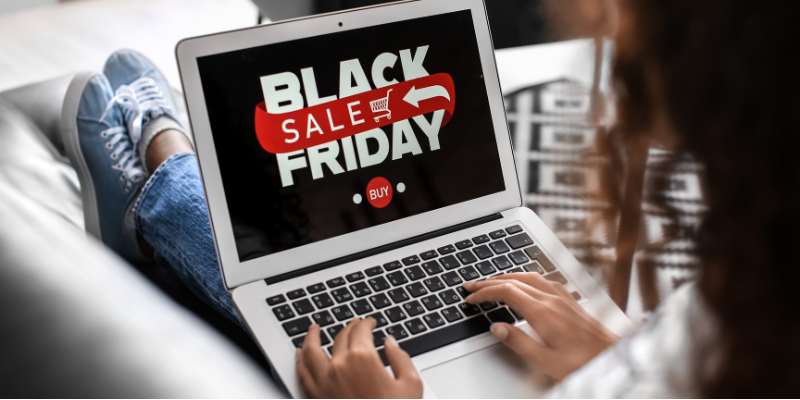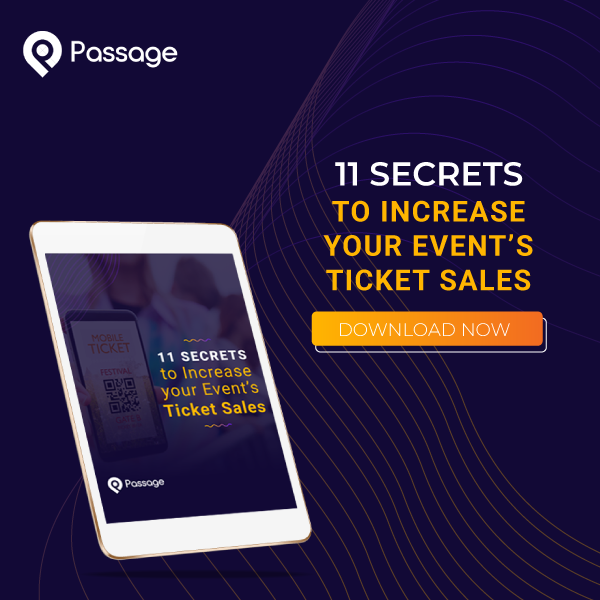Hybrid events include entertainment both for in-person audiences and remote guests who are attending from home. They’ve exploded in popularity over the past year: people around the world got comfortable with virtual experiences during the pandemic.
As things opened back up, the demand for live-streamed entertainment didn’t slow down. The benefits of virtual access had been cemented during lockdown: We attended concerts in cities halfway around the world. We joined festivals from the comfort of our living rooms, able to control the volume, temperature, and snacks available. We attended conferences without having to hire a babysitter or pack a suitcase.
Now, in 2021, savvy event producers have shifted to the hybrid model. Including both a virtual and in-person option for your events is a smart move. It opens up more revenue opportunities than a traditional in-person event ever could. And it can introduce new audiences to your work, helping you build a loyal fan base.
But, that only works if you do it the right way. Read on for three common mistakes event producers make when creating hybrid events.

1. Your virtual component is an afterthought
Too many events make the mistake of carefully planning a wonderful in-person experience only to gloss over the details when it comes to the live-streamed show. This often ends in disaster. If the quality of your virtual access doesn’t match the in-person experience, guests won’t want to return and growing your audience will be nearly impossible.
Think about the camera angles that will give virtual guests a feeling of really being there. Just one camera on a tripod with a wide-angle view of the stage probably won’t feel very immersive to guests attending from home. It’s ok to start small and simple, but it’s worth investing in professional equipment if your goal is to grow your live-stream audience and build revenue. Make sure you have good quality audio equipment as well as video cameras.
Finally, be sure to test your stream in advance. You might be surprised how many events forget about this critical step. Make sure someone on your team understands the live-streaming platform you’re using and is able to troubleshoot any issues that might come up during the event.
Want to know more about live-streaming best practices? Check out our Ultimate Guide to Live-Streaming here.

2. Your in-person and virtual tickets offer the same benefits
Attending an event from home is never going to feel exactly the same as being there in person. And for some guests, that can actually be a benefit. We’re not just talking about different price points for tickets. Instead of trying to make both types of access equal, think strategically about how you can offer unique benefits for your in-person and virtual guests.
In-person tickets might come with access to exclusive merchandise, meet-and-greet opportunities, a VIP lounge, specially created food & beverage options, or other perks that can only be enjoyed on site. Likewise, you might offer virtual guests access to a pre-show sound check, exclusive interviews with performers or special guests, or maybe a poll which allows them to help influence the live event itself (e.g. which song should we play next? Submit a question for the roundtable; suggest a theme for our next comedy sketch). Allowing virtual guests to see their suggestions impact the live event helps them feel closely connected no matter how far away they may be.
The key here is to leverage the medium, whether that be in-person or online, to create an exciting experience for your guests.

3. Your live-stream is only available, well...live
One of the main reasons that guests choose to attend an event virtually is because of scheduling conflicts. They may live local to your area, but can’t make it in person the day & time of your event. Hybrid events work great for these guests, but only if the virtual component comes with some flexibility.
Don’t just live-stream your show. Record it and make the playback available as a video-on-demand. For guests who didn’t hear about the event until after it ended (maybe a friend told them what a great time they had or they simply missed your email newsletter), this gives them a chance to participate that they otherwise would have missed out on. We’ve seen events on our platform continue to generate revenue for months after their live event ended simply by making their live-stream available on demand afterward.
Conclusion
The future of events is hybrid: there will continue to be demand for both in-person and virtual experiences. But it takes some hard work and careful planning to successfully adapt to this new format. When you’re ready to plan your next hybrid event, schedule a demo to see how Passage can help manage both the in-person and virtual access. Or schedule an onboarding call with our support team: we’ll set up all the ticketing for you!

.jpg)









